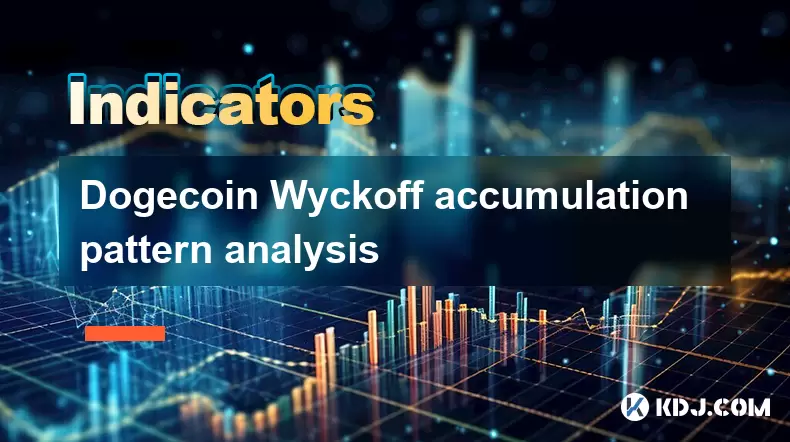-
 Bitcoin
Bitcoin $108,092.5658
-0.99% -
 Ethereum
Ethereum $2,546.4530
-1.12% -
 Tether USDt
Tether USDt $1.0000
0.01% -
 XRP
XRP $2.2676
0.12% -
 BNB
BNB $659.1616
-0.30% -
 Solana
Solana $148.8297
-1.97% -
 USDC
USDC $1.0000
0.02% -
 TRON
TRON $0.2874
-0.30% -
 Dogecoin
Dogecoin $0.1676
-3.64% -
 Cardano
Cardano $0.5765
-1.73% -
 Hyperliquid
Hyperliquid $37.2069
-6.18% -
 Bitcoin Cash
Bitcoin Cash $497.9918
-0.10% -
 Sui
Sui $2.8427
-2.26% -
 Chainlink
Chainlink $13.2689
-2.06% -
 UNUS SED LEO
UNUS SED LEO $9.0541
0.15% -
 Stellar
Stellar $0.2487
-0.92% -
 Avalanche
Avalanche $17.7710
-3.09% -
 Shiba Inu
Shiba Inu $0.0...01167
-1.28% -
 Toncoin
Toncoin $2.7488
-2.80% -
 Hedera
Hedera $0.1559
-2.28% -
 Litecoin
Litecoin $85.8945
-2.48% -
 Monero
Monero $316.0985
-2.09% -
 Dai
Dai $1.0001
0.02% -
 Polkadot
Polkadot $3.3481
-1.83% -
 Ethena USDe
Ethena USDe $1.0000
0.00% -
 Bitget Token
Bitget Token $4.2910
-3.04% -
 Uniswap
Uniswap $7.4131
-0.09% -
 Aave
Aave $280.9266
-2.67% -
 Pepe
Pepe $0.0...09816
-3.18% -
 Pi
Pi $0.4557
-2.29%
Dogecoin Wyckoff accumulation pattern analysis
Jul 08, 2025 at 12:56 pm

Understanding the Wyckoff Accumulation Pattern
The Wyckoff accumulation pattern is a classic technical analysis framework used to identify potential price reversals in financial markets. Originally developed by Richard D. Wyckoff, this methodology has been adopted widely across various asset classes, including cryptocurrencies like Dogecoin (DOGE). The core idea behind the Wyckoff accumulation pattern is to detect when institutional investors are quietly buying large quantities of an asset — often during periods of market pessimism.
In the context of Dogecoin, which began as a meme but has since gained traction as a legitimate trading instrument, understanding accumulation patterns can be crucial for traders looking to enter positions ahead of significant upward moves. The Wyckoff method typically involves analyzing volume and price action to determine whether an asset is in a phase of accumulation or distribution.
Key Phases of the Wyckoff Accumulation Pattern in Dogecoin
Preliminary Support (PS): This stage marks the end of a downtrend where selling pressure begins to diminish. In Dogecoin's chart, this may appear as a sharp decline followed by a sudden increase in volume without a corresponding drop in price.
Selling Climax (SC): At this point, panic selling occurs, often triggered by negative news or broader market corrections. Despite heavy volume, prices begin to stabilize, indicating that smart money might be stepping in.
Automatic Rally (AR): After the Selling Climax, there’s usually a quick rebound. This rally doesn’t necessarily reach previous highs but signals a shift in momentum.
Secondary Test (ST): A retest of the low established during the Selling Climax occurs, but with reduced volume. If the price holds above the previous low and volume remains low, it suggests accumulation is underway.
Each of these phases must be analyzed carefully using volume indicators and candlestick formations to confirm the legitimacy of the accumulation phase in Dogecoin's price chart.
How to Identify the Wyckoff Accumulation Pattern on Dogecoin Charts
To effectively apply the Wyckoff method to Dogecoin, you need access to a reliable charting platform such as TradingView or Binance's native tools. Here's how to go about identifying the pattern:
Zoom out to higher timeframes: Start by analyzing the daily or weekly charts. Short-term volatility can obscure the broader accumulation structure.
Look for clear support zones: Use horizontal lines to mark areas where the price found support multiple times. These levels often become critical in confirming accumulation.
Compare volume across phases: During the Preliminary Support and Selling Climax, volume should spike. During the Secondary Test, volume should contract. A rising volume during the subsequent rally confirms institutional buying.
Observe candlestick behavior near key levels: Strong bullish candles at support zones, especially after a prolonged downtrend, indicate strong buying interest.
By combining these elements, traders can pinpoint whether Dogecoin is currently in an accumulation phase or merely bouncing within a downtrend.
Practical Steps to Trade Dogecoin Using Wyckoff Accumulation Signals
If you're considering entering a long position based on a Wyckoff accumulation signal in Dogecoin, follow these steps:
Confirm the formation of all Wyckoff phases: Ensure that PS, SC, AR, and ST have occurred in sequence. Skipping any step could lead to false positives.
Identify the springboard breakout zone: This is typically the resistance level formed after the Automatic Rally. A clean break above this level with increased volume confirms the start of a new uptrend.
Place entry orders strategically: Consider placing a buy order slightly above the breakout level with a stop loss just below the Secondary Test low.
Set realistic profit targets: Measure the height of the accumulation range and project it upwards from the breakout point. For example, if DOGE accumulates between $0.06 and $0.08 over several weeks, a target of $0.10 post-breakout would be logical.
Monitor ongoing volume and price action: Even after entering a trade, continue to observe whether volume supports the move. A lack of volume during the rally could suggest weak conviction among buyers.
These actionable insights allow traders to take calculated positions rather than speculative gambles in Dogecoin.
Common Pitfalls When Applying Wyckoff Patterns to Dogecoin
Despite its effectiveness, applying the Wyckoff accumulation pattern to Dogecoin comes with risks and common mistakes:
Misreading chart structures: Many traders confuse short-term bounces with actual accumulation patterns. Without proper volume confirmation, what looks like accumulation could simply be a dead cat bounce.
Overlooking market sentiment: Since Dogecoin is highly influenced by social media and celebrity mentions, fundamentals or traditional technical patterns may not always hold up.
Ignoring macroeconomic factors: Bitcoin’s price movements significantly influence altcoins like DOGE. A broad market downturn can negate even the strongest Wyckoff signals.
Failing to use stop losses: Emotional trading often leads to holding onto losing positions longer than necessary. Always define your risk before entering a trade.
Avoiding these pitfalls ensures that your application of the Wyckoff accumulation pattern to Dogecoin remains disciplined and effective.
Frequently Asked Questions (FAQs)
Q: Can the Wyckoff accumulation pattern be applied to other cryptocurrencies?
Yes, the Wyckoff methodology is applicable to any tradable asset with sufficient liquidity and volume data, including Ethereum, Bitcoin, and Litecoin.
Q: Is Dogecoin suitable for long-term investment based on Wyckoff analysis?
Wyckoff analysis primarily focuses on medium-term price action rather than long-term value assessment. It helps identify entry points but does not evaluate intrinsic value or adoption potential.
Q: How reliable is the Wyckoff accumulation pattern in volatile markets like crypto?
While the pattern provides a structured approach, crypto markets' high volatility and unpredictable news cycles can distort typical Wyckoff formations. Combining it with additional tools like moving averages or RSI improves reliability.
Q: What tools are best suited for performing Wyckoff analysis on Dogecoin?
Trading platforms like TradingView, Binance Charting Tools, and CoinMarketCap Pro offer advanced charting features that support Wyckoff pattern identification through volume overlays and drawing tools.
Clause de non-responsabilité:info@kdj.com
Les informations fournies ne constituent pas des conseils commerciaux. kdj.com n’assume aucune responsabilité pour les investissements effectués sur la base des informations fournies dans cet article. Les crypto-monnaies sont très volatiles et il est fortement recommandé d’investir avec prudence après une recherche approfondie!
Si vous pensez que le contenu utilisé sur ce site Web porte atteinte à vos droits d’auteur, veuillez nous contacter immédiatement (info@kdj.com) et nous le supprimerons dans les plus brefs délais.
-
 ICNT Échangez maintenant
ICNT Échangez maintenant$0.3182
30.31%
-
 M Échangez maintenant
M Échangez maintenant$0.2011
23.43%
-
 SOLO Échangez maintenant
SOLO Échangez maintenant$0.3788
17.55%
-
 HSK Échangez maintenant
HSK Échangez maintenant$0.7010
17.49%
-
 SHX Échangez maintenant
SHX Échangez maintenant$0.0116
15.42%
-
 COREUM Échangez maintenant
COREUM Échangez maintenant$0.1392
8.59%
- Bitcoin Solaris Market Launch: A New Dawn or Just Another Altcoin?
- 2025-07-08 20:30:12
- Bitcoin, Memecoin Mania, and the All-Time High Hunt: What's Next?
- 2025-07-08 20:30:12
- Byrq Coin: Scam or Savior? A Deep Dive Review
- 2025-07-08 20:50:12
- Shiba Inu's Burn Rate Bonanza: Can Crypto Burns Ignite a Price Rally?
- 2025-07-08 20:50:12
- XLM Price Prediction: Is Stellar Ready for a Breakout?
- 2025-07-08 19:10:13
- Memecoin Mania: V2EX, Pump.fun, and the Wild West of Crypto
- 2025-07-08 19:50:12
Connaissances connexes

How to trade Dogecoin based on funding rates and open interest
Jul 07,2025 at 02:49am
<h3>Understanding Funding Rates in Dogecoin Trading</h3><p>Funding rates are periodic payments made to either long or short traders ...

What is the 'God Mode' indicator for Dogecoin
Jul 07,2025 at 04:42pm
<h3>Understanding the 'God Mode' Indicator</h3><p>The 'God Mode' indicator is a term that has emerged within cryptocurrency trading ...

Using Gann Fans on the Dogecoin price chart
Jul 07,2025 at 09:43pm
<h3>Understanding Gann Fans and Their Relevance in Cryptocurrency Trading</h3><p>Gann Fans are a technical analysis tool developed b...

How to spot manipulation on the Dogecoin chart
Jul 06,2025 at 12:35pm
<h3>Understanding the Basics of Chart Manipulation</h3><p>Chart manipulation in the cryptocurrency space, particularly with Dogecoin...

Dogecoin market structure break explained
Jul 07,2025 at 02:51am
<h3>Understanding the Dogecoin Market Structure</h3><p>Dogecoin, initially created as a meme-based cryptocurrency, has evolved into ...

How to backtest a Dogecoin moving average strategy
Jul 08,2025 at 04:50am
<h3>What is a Moving Average Strategy in Cryptocurrency Trading?</h3><p>A moving average strategy is one of the most commonly used t...

How to trade Dogecoin based on funding rates and open interest
Jul 07,2025 at 02:49am
<h3>Understanding Funding Rates in Dogecoin Trading</h3><p>Funding rates are periodic payments made to either long or short traders ...

What is the 'God Mode' indicator for Dogecoin
Jul 07,2025 at 04:42pm
<h3>Understanding the 'God Mode' Indicator</h3><p>The 'God Mode' indicator is a term that has emerged within cryptocurrency trading ...

Using Gann Fans on the Dogecoin price chart
Jul 07,2025 at 09:43pm
<h3>Understanding Gann Fans and Their Relevance in Cryptocurrency Trading</h3><p>Gann Fans are a technical analysis tool developed b...

How to spot manipulation on the Dogecoin chart
Jul 06,2025 at 12:35pm
<h3>Understanding the Basics of Chart Manipulation</h3><p>Chart manipulation in the cryptocurrency space, particularly with Dogecoin...

Dogecoin market structure break explained
Jul 07,2025 at 02:51am
<h3>Understanding the Dogecoin Market Structure</h3><p>Dogecoin, initially created as a meme-based cryptocurrency, has evolved into ...

How to backtest a Dogecoin moving average strategy
Jul 08,2025 at 04:50am
<h3>What is a Moving Average Strategy in Cryptocurrency Trading?</h3><p>A moving average strategy is one of the most commonly used t...
Voir tous les articles

























































































